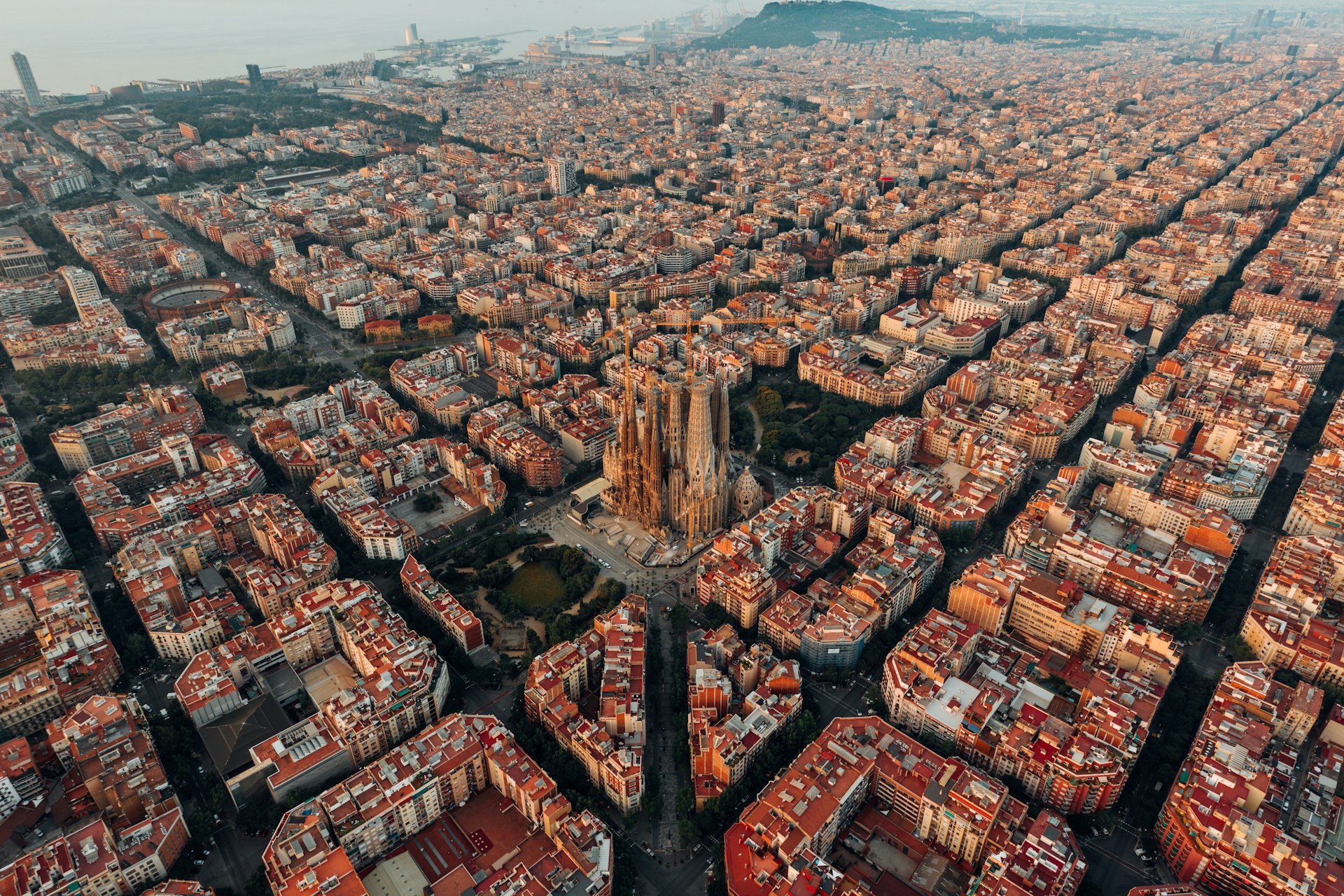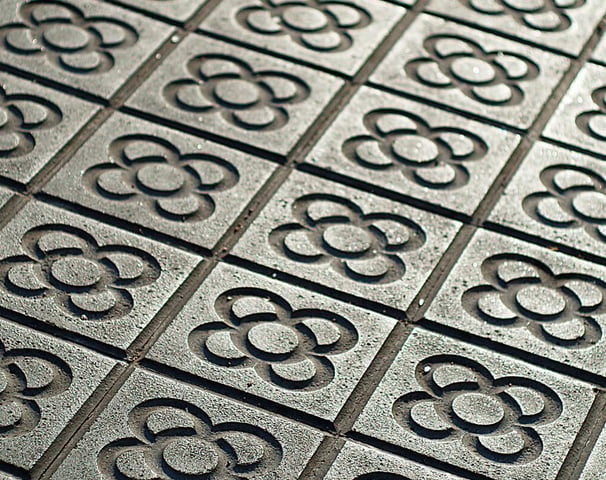
The flower of Barcelona
Modernist symbol and heritage of the city
Panot
The design of the panot (known as the flower of Barcelona) is an iconic modernist symbol of the city that has graced its streets for over a hundred years. With its distinctive floral pattern, the panot not only beautifies the sidewalks but also represents Barcelona's identity and history.
Its popularity transcends local borders, becoming internationally recognized as an emblematic element of Catalan urban design and a constant source of inspiration for various products and designs.


History
If we had to describe some of the world's most famous cities in a single word , the combinations would probably be: Paris-lights, Buenos Aires-squabbles, Berlin-memories, New York-movies, Vienna-music, or Venice-gondolas. Meanwhile, among the ingredients that define Barcelona are some as diverse as partying, beaches, Gaudí, and art. However, it hasn't always been this way.
At the beginning of the century, several cartoons in satirical magazines, such as L'Esquella de la Torratxa , were responsible for spreading the bad reputation that the city had due to the shortcomings of its urban planning: the streets were not paved and this, added to the humidity due to its proximity to the sea, gave it the derogatory name of ' can Fanga' (in Spanish, 'house of mud'), due to the amount of mud that accumulated on the sidewalks.
Faced with this situation, those in charge of carrying out the Cerdà plan , which had been launched in 1860 and consisted of applying the Hippodamian plan to the city, listened to the needs of the population and decided to homogenize the paving of the sidewalks using a cheap, locally produced material : hydraulic cement.
THE PAVING STONE COMPETITION
Many attribute the design of the Flor de Barcelona—also known as the "panot"—to the architect Josep Puig i Cadafalch (1867–1956), one of the key figures in the design of the block of discord on the elegant Passeig de Gràcia. However, the truth is that this beautiful paving stone was created through a public competition launched by Barcelona City Council in 1906 .
With the aim of paving the sidewalks of the entire city, a goal for which they would need around 10,000 tiles , the companies were given the creative initiative of proposing several designs, among which were the symbolic flower, a skull, concentric circles, four pills and four pills with four circles.
The competition was won by Casa Escofet , a family-run company dedicated to paving since 1886, with the "panot" design, which was chosen as the predominant paving stone on the streets of the Ensanche district. The other designs, however, were also used and can be seen in various areas of the city today. In fact, all four designs can be found side by side on one street on Aribau Street.
FROM 'PANOT' TO MODERNIST PAVING STONES: THIS IS THE BARCELONA SOIL
Amidst all the tourist attractions in Barcelona, the city's paving often goes unnoticed, and few know its history. Shortly after the competition in which the "panot" became the city's main paving stone, Casa Escofet embarked on new projects related to its specialty: paving. It was they themselves who also designed the cobblestone carpet that covers Passeig de Gràcia , taking as an example the paving of the boulevard's Modernist jewel: Casa Batlló.
Likewise, in 1968 the same company was a pioneer in Spain in the use of vibropressed concrete, which it used in the symbolic mosaic designed by Adolfo Florensa that decorates Barcelona's main artery: La Rambla , a place that has witnessed the greatest celebrations and the worst tragedies.
And, although not as historic, the latest paving stone to be added is the banana blossom—the most used tree in urban areas in southern Europe—on Avenida Diagonal, dating from 2015.
A SYMBOL OF THE CITY
Attended by more than 28 million annual visitors and around 1.6 million locals, Barcelona's symbolic "panot" and its companions—the four pastilles, the waves of the Rambla, the modernist cobblestones, and the plane tree—have witnessed numerous historical events in the city.
Now, after more than 100 years of events, the Flower of Barcelona is not only part of the Catalan capital's identity , but has also reached places around the world never imagined. Transformed into keychains or coasters , tourists search souvenir shops for a copy of the " panot" to take home. And while this practice is questionable, it is said that locals scour construction sites in the city to obtain authentic examples.
Article taken of NatGeo. Written by Constanza Vaca. Link to the article: https://historia.nationalgeographic.com.es/a/adoquin-barcelona-panot-historia_20076
